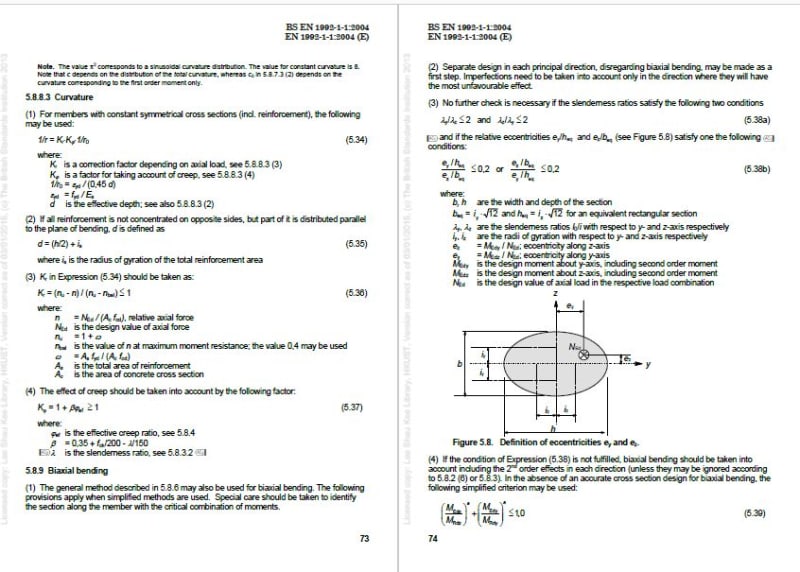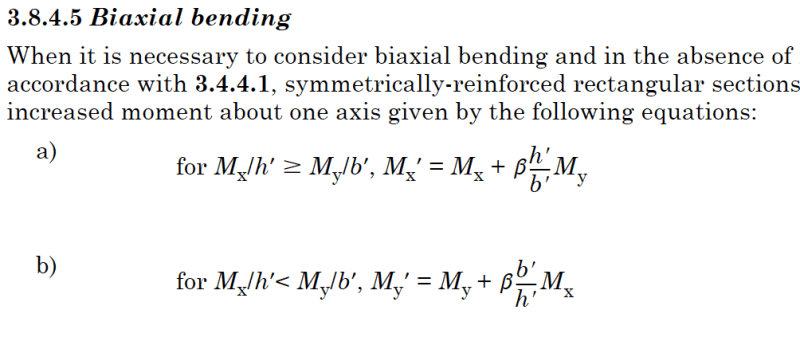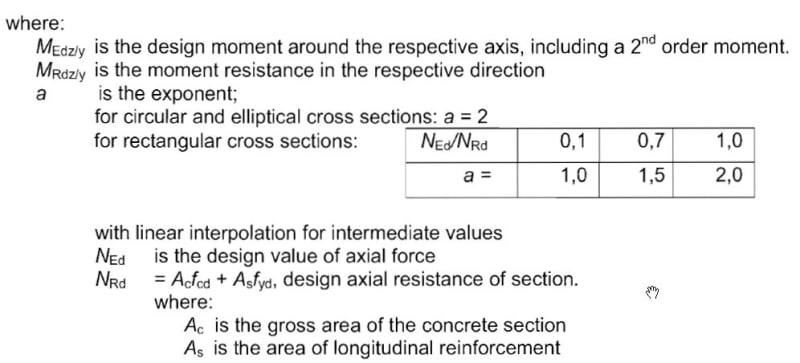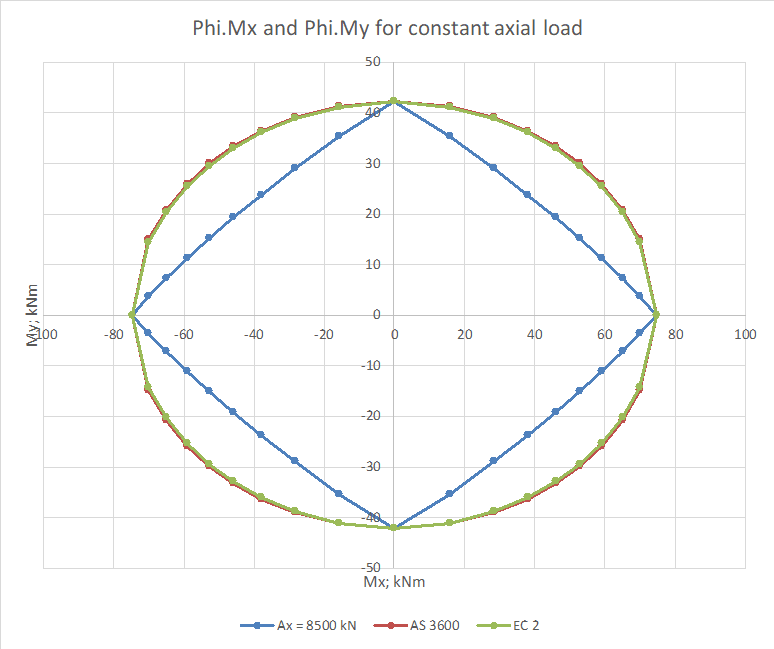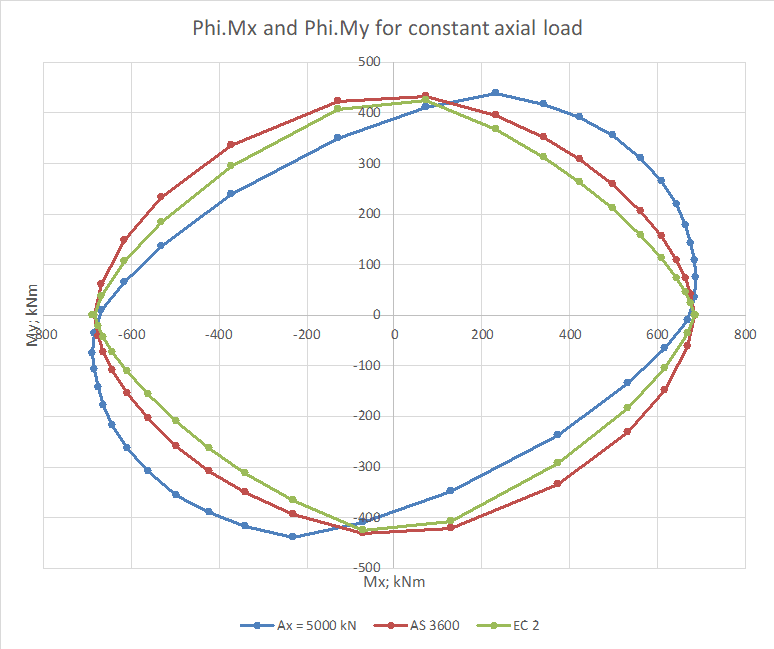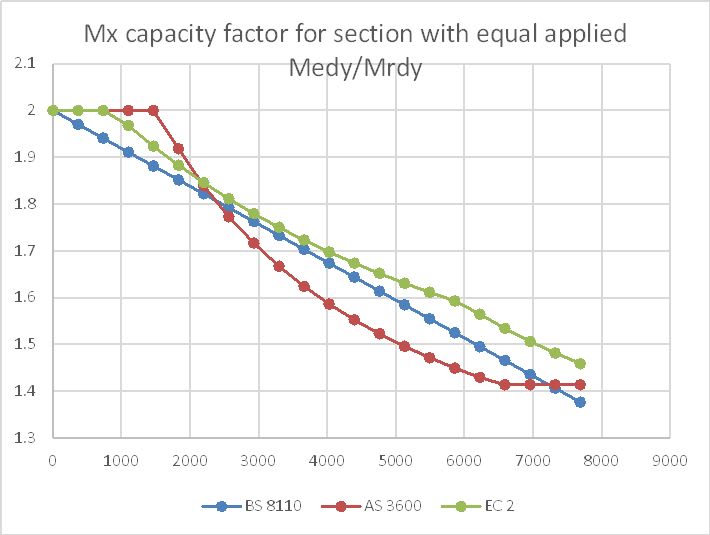Pretty Girl
Structural
I'm designing a short column in accordance with Eurocode 2. This column is situated at a corner with bi-axial bending as it has beams fixed to it.
I want to calculate the total moment (suppose I have already calculated the moments of both axes), so I can feed to the design moment equation "M02 + (Ned ✕ ei)" to get the design moment.
As I see the steel bar at the corner gets both "x" and "y" moments in both axes (example below).
So, I feel we need to combine both moments (x and y axes) before feeding to the above equation.
So, M02 = (Mx + My) = (100 + 150 kNm) = 250 kNm total for both axes?
My questions are,
1. Do we need to sum up both the moments (100 + 150 kNm = 250 kNm) as I did above before feeding it to the equation?
2. Do we feed total 250 kNm to the above equation to get the design moment or just the 150kNm (bigger moment only)?
The calculation example books are bit unclear of the above.
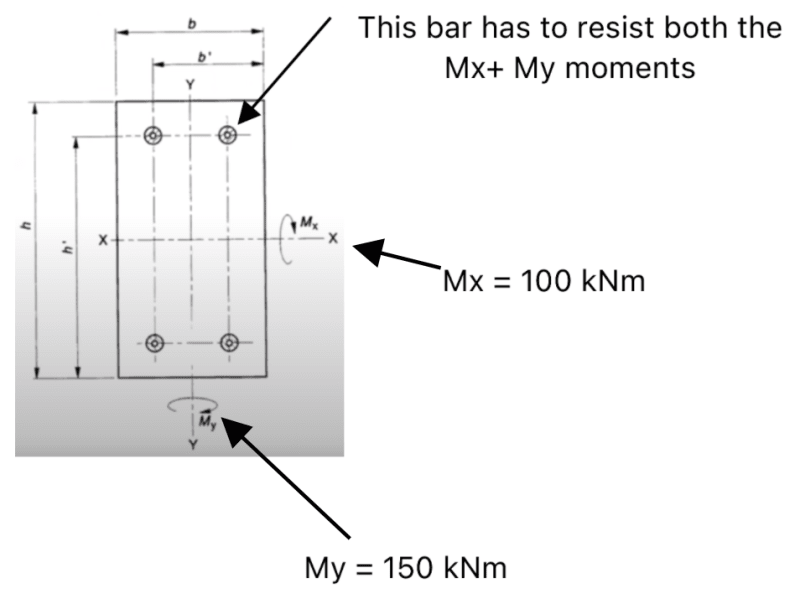
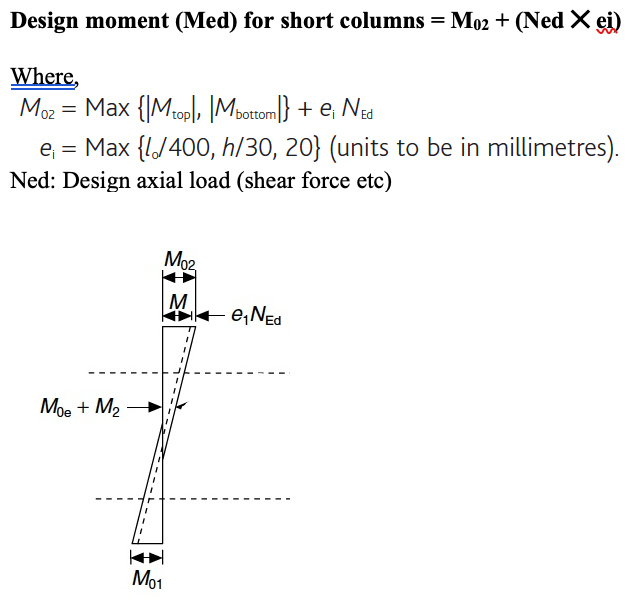
I want to calculate the total moment (suppose I have already calculated the moments of both axes), so I can feed to the design moment equation "M02 + (Ned ✕ ei)" to get the design moment.
As I see the steel bar at the corner gets both "x" and "y" moments in both axes (example below).
So, I feel we need to combine both moments (x and y axes) before feeding to the above equation.
So, M02 = (Mx + My) = (100 + 150 kNm) = 250 kNm total for both axes?
My questions are,
1. Do we need to sum up both the moments (100 + 150 kNm = 250 kNm) as I did above before feeding it to the equation?
2. Do we feed total 250 kNm to the above equation to get the design moment or just the 150kNm (bigger moment only)?
The calculation example books are bit unclear of the above.



